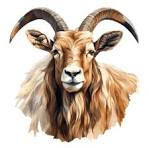All five sub-species of Markhor are at the forefront of threats which include the habitat loss, low reproductive rates, lack of incentives, poaching, lack of operational funds, lack of public awareness and deforestation etc.. One of the major problems is habitat loss which plays a vital role in the extinction of Markhor and other wild animals. The factors which affect the habitat of Markhor are overpopulation of humans, more usage of wood, logs planks, pasturing, foraging and conquering of alien species. In 1975 Wildlife Act a cash reward is announced but no reward for the staff and insufficient investment demoted the workers. Lack of education is a hindrance in conservation. Regional community in KPK are ignorant of the social and economic welfare for renewable conservation of wildlife. So, it is noticed a lack of knowledge about wise use of wild species, lack of concentration, inadequate budget, and topographical isolation are some reasons for the extinction of hoofed species....





